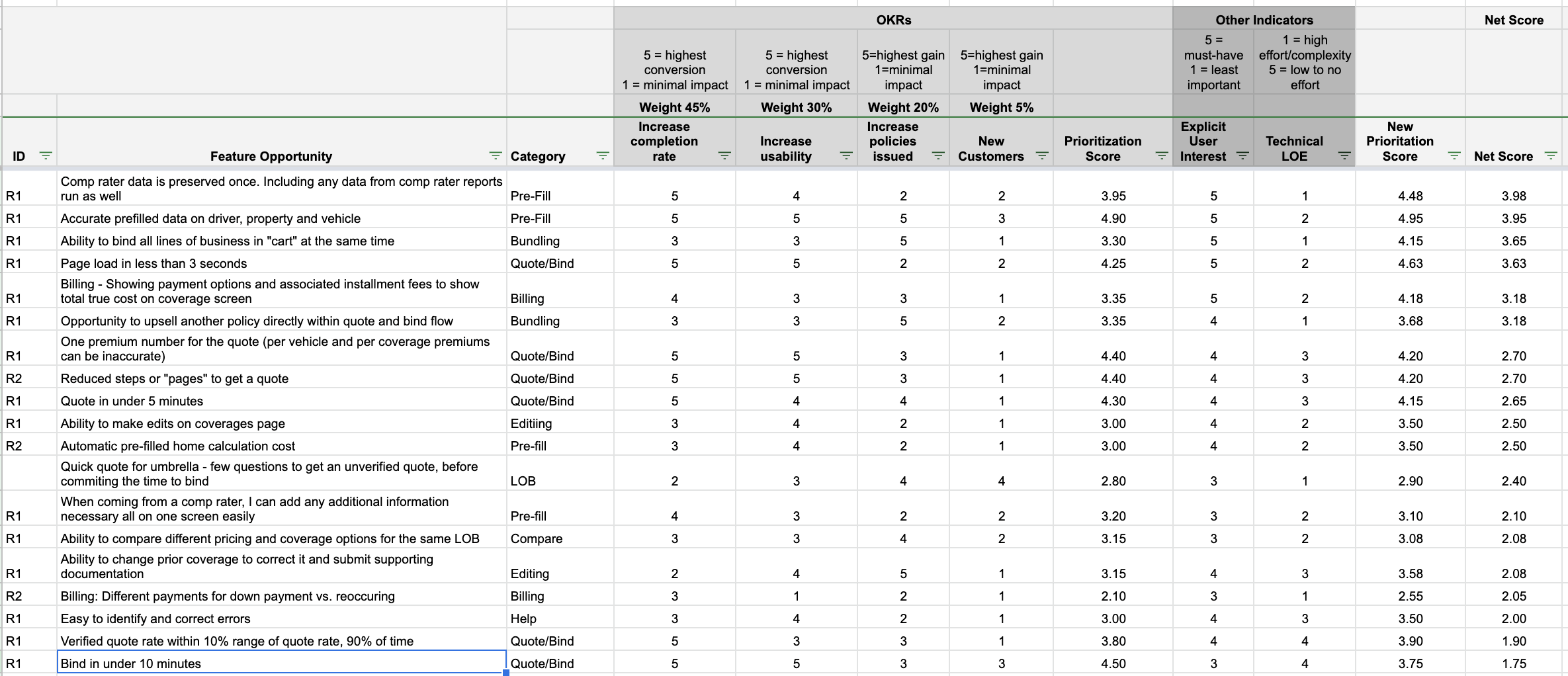
Prioritization is one of the most challenging yet essential activities involved in running a successful business. The sheer number of competing demands—short-term revenue goals, customer needs, market shifts, and internal pressures—especially at larger organizations, can make aligning around prioritization feel like a fool’s errand.
But as anyone who has ever been involved in a sunk-cost saga knows, failing to prioritize effectively is risky. Poor prioritization can lead to misallocated resources, a lack of strategic focus, and failed products—not to mention the impact on the people involved. Without clear prioritization, teams are left demotivated, mired in endless debates, chasing the latest requests rather than executing on a cohesive vision.
Nowhere is this challenge more evident than in product development. A company’s ability to bring a successful product to market depends on how well it prioritizes—not just at the business level but within the product strategy itself. Every decision made at the product level must ladder up to both strategic business goals and real customer needs. If a product team lacks focus, is misaligned with business objectives, or builds in a vacuum without a deep understanding of the customer, even the most innovative ideas fail. That’s why product leaders and their teams play a crucial role in translating broader business priorities and customer insights into a tangible, actionable vision.

As product leaders, one of our primary roles is as evangelists. It’s our job to get everyone involved in a project excited and onboard with the product vision and invested in seeing it come to life. To this end, it’s critical we know how to craft clear and compelling narratives that articulate and communicate a product vision, build consensus among stakeholders, and create top-to-bottom alignment—from the business and product strategy level all the way down to planning, execution, and delivery.
The most important tool for accomplishing this is indisputably the digital product roadmap.
What is a digital product roadmap?
At its core, a digital product roadmap is two things. First, it’s a visual story of the product vision based on user value and business impact that connects stakeholders with the journey so they walk away with the most pertinent information.
Why visual? Studies have shown that people tend to have better recall when they experience information visually than they do through reading or hearing. In short, the brain processes visual cues better than written or the spoken word. For this reason, a visual framework is a powerful tool for getting buy-in and creating alignment.
Second, a product roadmap is a concise tool for business empowerment, providing an executive view of when and how a product’s capabilities will be deployed. It tends to be focused on the longer term (think 6-18 months out) and is not to be confused with a backlog, which may look more like a detailed project plan that provides functional requirements, accounting for technical dependencies and constraints etc..
An effective product roadmap will provide stakeholders with:
- Clarity: telling the story of why we are doing what we are doing now
- Alignment: keeping teams (executives, stakeholders, support and product team members) aligned around a shared focus
- Answers: reducing questions about long-term and short-term priorities and product direction
- Accountability: tracking progress and impact of features to product goals as well as target dates
To create a digital product roadmap that does all of this not only requires upfront customer and stakeholder research but often multiple roadmap work sessions where stakeholders and key decision makers can share ideas, engage in constructive debate, and prioritize.
To do so effectively requires a skilled product leader equipped with tools and frameworks for visualizing and prioritizing the roadmap.
On-demand Webinar – Prioritizing Your Digital Product Roadmap
Learn how the role of product can be used to create a foundation for strategic alignment and management buy-in, helping organizations accelerate product launches, better meet customer needs and expectations, and achieve business KPIs.
Six useful frameworks
When it comes to choosing a framework for your digital product roadmap, there is, for better or worse, no one-size-fits-all framework. Different factors, like the complexity of the product itself; the size, composition and maturity level of your team and and/or organization; and how you plan to use the framework and in what context, will all need to be considered when deciding which framework is right for you.
Below are some commonly used frameworks I recommend for prioritization, with suggestions for when and why to use them.
1. Impact vs Effort
Great for quick prioritization and presentations
Also known as the 2X2, Lean Prioritization, and Value vs. Risk, the Impact vs. Effort framework is a simple and straightforward matrix for quickly prioritizing product features and updates based upon how much impact they will have and how much effort it will take to achieve them. Seeing what appears in the lower right quadrant (highest impact, lowest effort) can help your team align on what product features or updates are going to be slam dunks for your business and your customers and which are likely to cause bottlenecks. You can also customize and redefine the axis points as needed.
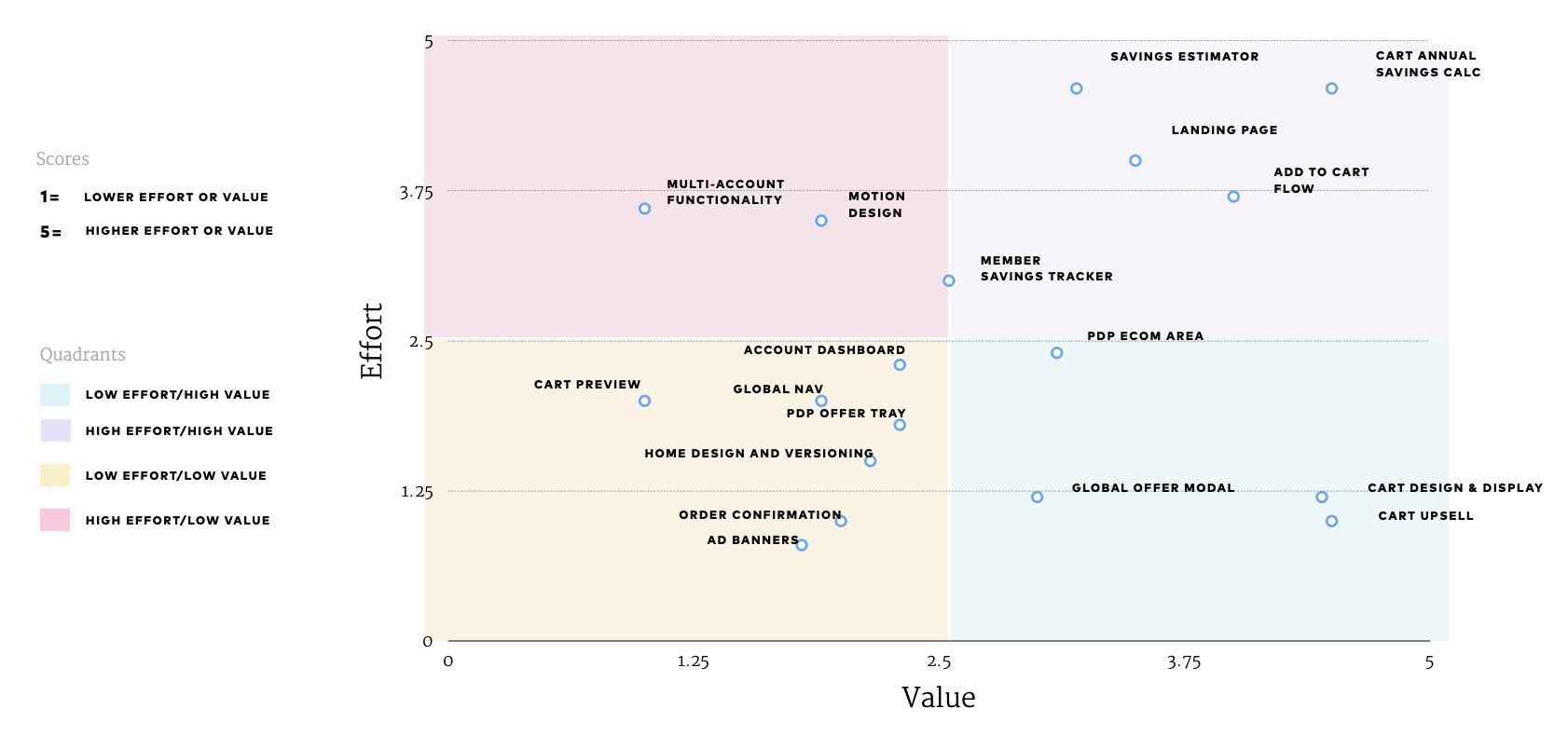
2. Quarterly List
Great for larger portfolio product roadmaps
Also a broadly used framework, the Quarterly List is a way to factor in time to your prioritization. A typical view will include a list of deliverables organized by time and possibly OKR or theme (marketing, servicing etc.) and can be coded by priority level. Note that to be able to provide this view, other frameworks and models will need to be used behind the scenes but the Quarterly List is a good way to get larger organizations with multiple product teams all on the same page.
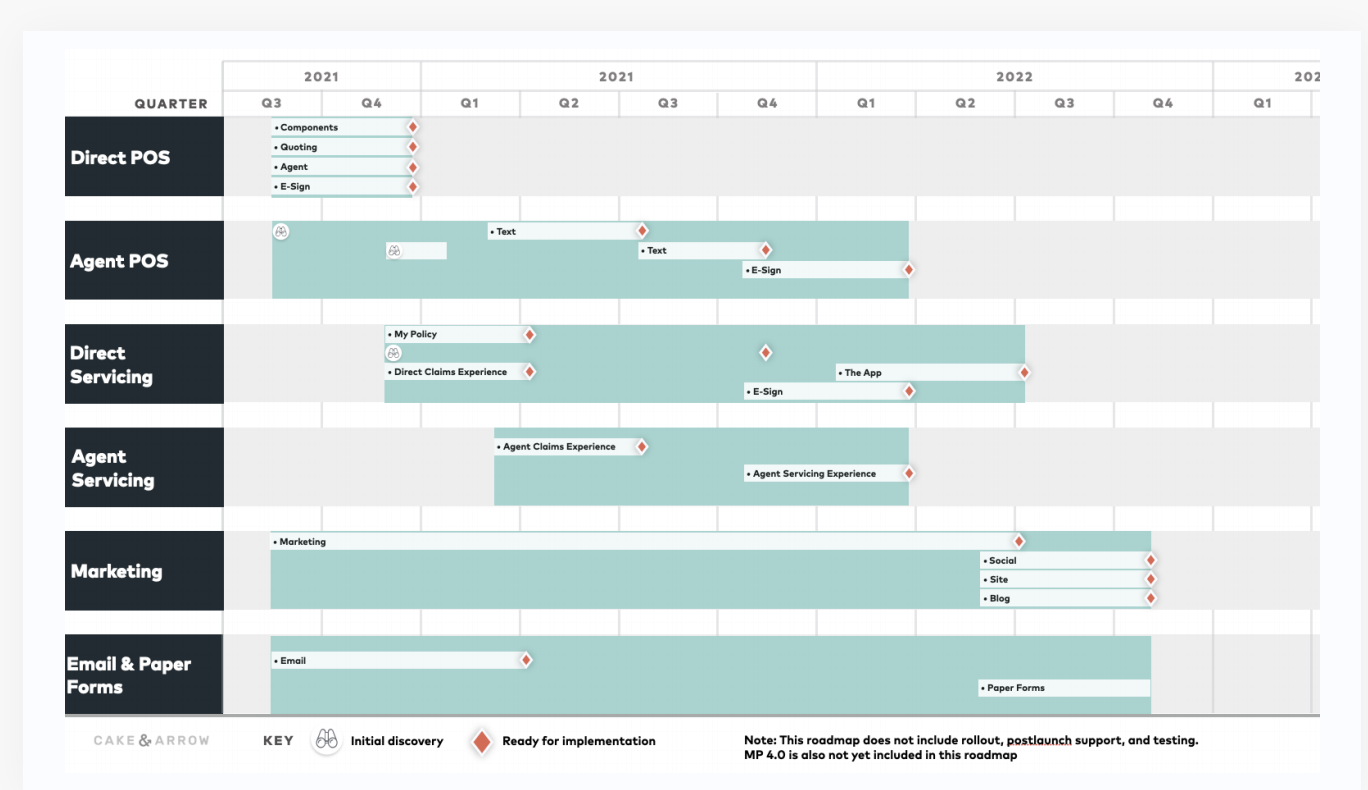
3. MoSCoW
Great for defining an MVP
Frequently employed when planning a new product launch, MoSCoW is an acronym used to determine which features will make it into a new product:
- M – MUST HAVE this feature, it is non-negotiable as the system cannot be used without it
- S- SHOULD HAVE this feature. It has high business value, but (if necessary) the product could function without it
- C – COULD HAVE this feature, but it is less critical, considered nice-to-have
- W – WON’T HAVE feature with the least business value – and will not be included now, but in the future, also known as wishlist
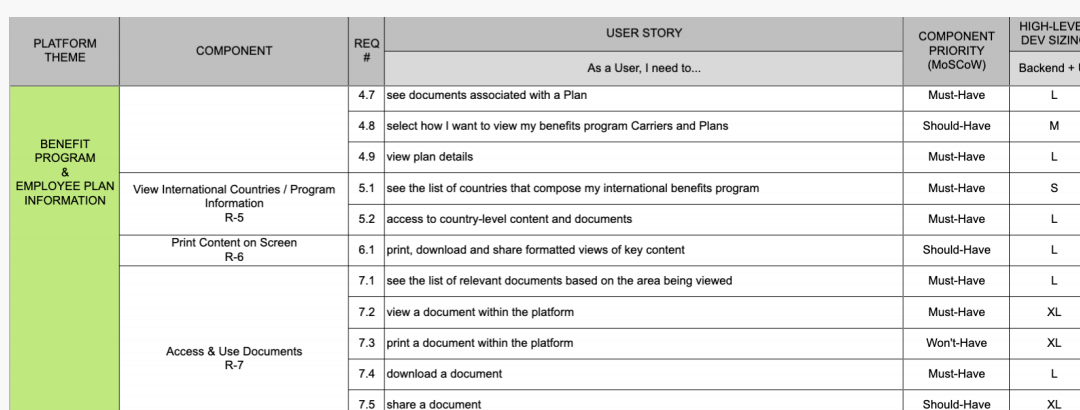
While this framework is useful for defining an MVP, it not only requires user feedback as an input to reduce subjectivity but also necessitates that some of the requirements be known or elicited in advance, as you’ll need to be able to know what those requirements are in order to rank them using this framework.
4. Buy a Feature
Great for internal teams and user research
This framework is a fun and simple tool for collaboration that fosters engagement, gets participants excited about the process of prioritization, and gets people thinking more realistically as it employs the use of “money” as a way of gauging interest.
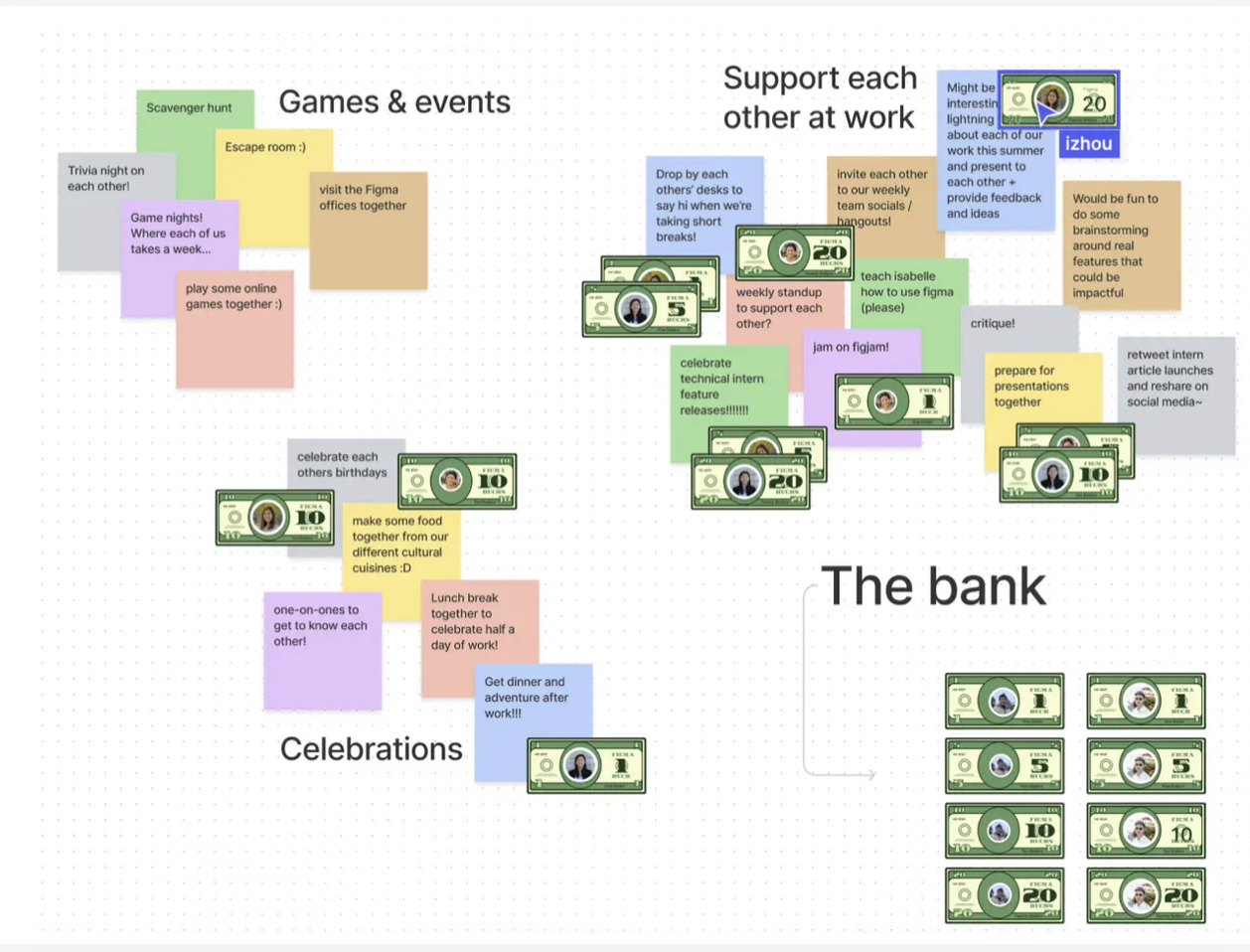
To use this framework, you list out the product features that are on the roadmap, assign a price to them (you can even go so far as to base the price on the relative cost to develop the feature), hand out a specific amount of “money” to each participant and ask them to buy features. Seeing where people “spend” the most “money” determines your priorities. We’ve also had success using this framework both with customers in user research and with stakeholders and then comparing the results to understand where the businesses’ priorities align with those of the users and where they don’t.
5. Weighted scoring
Great for linking the business with the customer needs alongside technology
This is the framework we use most often at Cake & Arrow. It combines a little bit of everything. Using our formula, we are able to take a look at business objectives, OKRs, user interest or impact and use a likert scale to weight each category to ultimately come up with a net score for prioritizing product features. It provides a holistic and nuanced way to account for the goals of the business and the customer alongside technology. By ranking strategic initiatives and major features in this way, product leaders can facilitate a more productive discussion about what to include on the product roadmap.
Weighted Scoring Framework
Our weighted scoring template provides a holistic and nuanced framework for prioritizing your digital product roadmap. Download our ready-to-use template to start prioritizing your digital product roadmap today.
6. Rice & Ice
Great for more established product roadmaps and when interested in scoring without too much detail
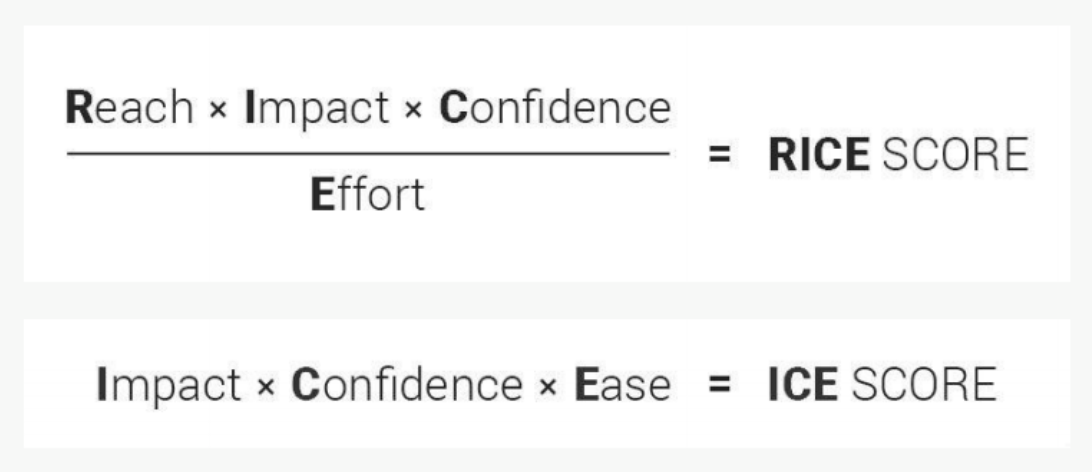
Like Weighted Scoring, RICE and ICE are frameworks for scoring product features. They are very popular models for prioritization because they define OKRs for you. If you have not yet defined OKRs, RICE and ICE are a great place to start. However, each OKR is weighed equally and while that can be great if you have equal business targets, weighted scoring might make more sense if you want to weight your OKRs differently. If you do have OKRs, it is best to benchmark with those in mind and weight them accordingly.
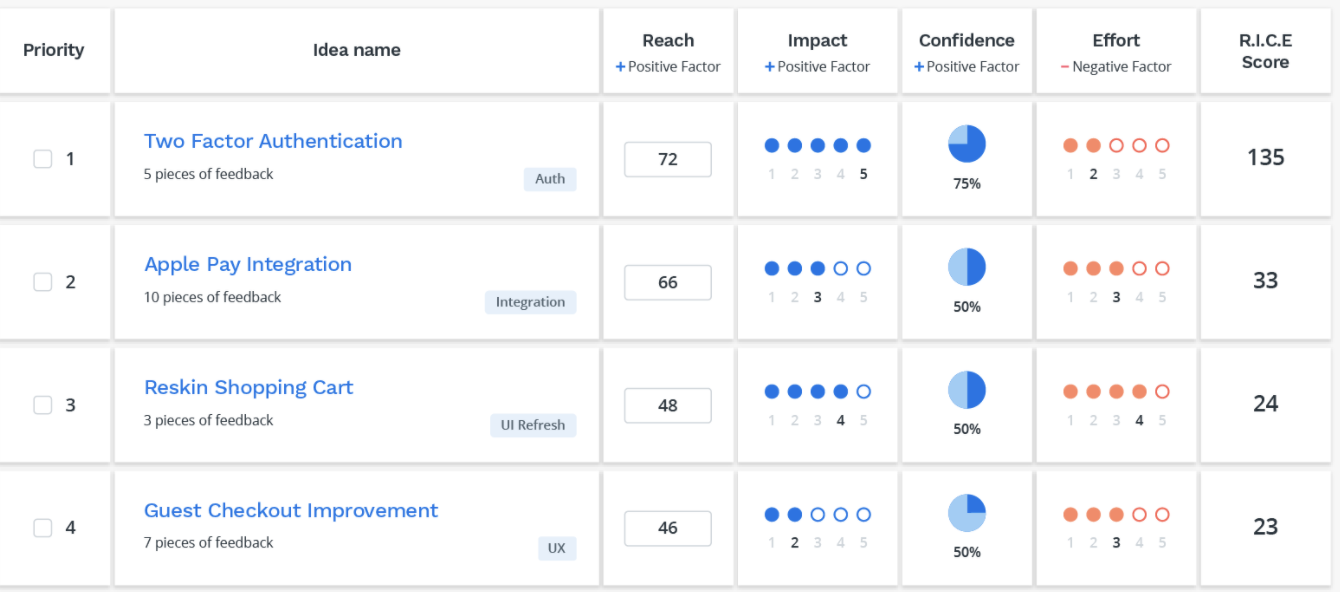
Final Thoughts
No matter which framework you choose, remember that prioritization is not about what your competitors are doing, what sales leads are requesting, or what technology says is feasible. It’s about what is best for your business and your customers. Prioritization is a moving target and should always be:
- An interdisciplinary, team exercise. Those outside the product group have valuable insights into your users and market.
- Based on user research, customer feedback, and innovative ideas from your leaders, experts and stakeholders.
- Able to answer “why” and help you defend your product strategy
